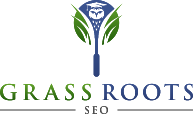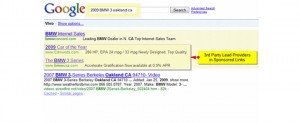8 Essential SEO Tips for Beginners
8 SEO Tips That Still Matter
Details matter in proper search engine optimization, as does consistency in doing the same right thing on every page every time. Search engines like Google or Bing use complex algorithms to rank websites. As an owner of a website, you’ll need at least a basic understanding of search engine optimization in order to get anywhere. You can maximize your WordPress website and get the most out of your investment. These eight SEO tips are risk-free and should be applied to every website you make.
1.Improve your permalinks
Permalinks make it easy for users to navigate your site. A good permalink structure is well organized, easy to understand, and descriptive. Bad permalinks use dates and numbers instead of descriptions. Good permalinks, on the other hand, allow visitors to understand where they are from a glance. Avoid using numbers, dates, and lengthy URLs; instead, make use of hyphens and straightforward keywords that describe what the page is about.
 2.Optimize page titles and description
2.Optimize page titles and description
Seems like a real no-brainer here, take advantage of each and every SEO tactic that adds relevance to a web page. A good page title and its succeeding description can do wonders for SEO. Strong page titles for low-competition keywords can give you a leg up on your competitors. A page’s meta tag in particular is displayed on search results, allowing visitors a glimpse of what your content is about. Give each page a unique page title that accurately describes its contents.
More importantly, don’t forget to give your homepage its own title and description. Don’t just give page titles and descriptions to blog posts. Remember to keep titles and descriptions brief. Avoid using too many keywords and repeating the title in the description.
3.Practice proper formatting
It may seem minor, but proper formatting can make your pages easier to navigate and easier to index. Remember to use H1, H2, and H3 tags in your content. Use H1 tags for post titles and H2 tags for headings. Don’t forget to use bold and italics to emphasize points across your content, and use a font size that is easy to read. Short paragraphs can also make content more digestible. Remember to check if your formatting is mobile-friendly. Most people use their phones or tablets to view blogs. Make sure that your content can be properly scaled across multiple devices.
4.Create a sitemap
A sitemap is a list of pages on a website. You’ll need to create two types of sitemaps: an HTML sitemap for visitors and an XML sitemap for search engines. While HTML sitemaps are useful for improving user experience, the XML sitemaps that you submit to search engines can make indexing your site faster. This inevitably gives a boost to SEO.
5.Images should be optimized and compressed
Images are necessary to improve user experience. Use high-quality images across your site. Use high-definition images but make sure that they don’t take forever to load. Images should not exceed a megabyte in size. Using alt text to describe images can also provide a boost in SEO. Don’t forget to use keywords in your descriptions as well.
6.Properly configure a 404 page
A 404 page appears when a user arrives on a page on your site that doesn’t exist. You can improve user experience with a properly configured 404 page that explains to visitors what went wrong. A 404 page should also match the design of the website and give visitors an easy way to navigate back into the website.
7.Use breadcrumbs for easy navigation
Breadcrumbs are navigational links that usually appear near the top of a page. Breadcrumbs are descriptive in nature and follow a hierarchical structure.
“Category > Subcategory > Current Page Title” is an example of a breadcrumb. Use breadcrumbs in all your internal pages if possible. CMSs like WordPress have plugins that make adding breadcrumbs easy.
8.Use more internal links
Link sculpting is way old school, but still has a place when done correctly and in moderation. Don’t forget to link to your own content. Internal links can contribute a lot to SEO. Link related articles and content together. Make sure the links stand out for both visitors and search engines. They should be brief and unobtrusive. Remember to keep links relevant; a blog post about weight loss shouldn’t randomly include links about gardening, for example. Avoid using too many links; three to five links are good enough.
Ideally, newer posts should link to old content. But the reverse can be just as good for SEO. If you have the time, revisit old posts and link to newer content. It can be time consuming but the returns are worth it.
Whether you’re building your first website or your fifth, remember these 8 fundamental SEO tips. Content is still king, but if you want your site to get noticed, you’ll need to do the hard work behind the scenes.

A seasoned digital marketing professional with over 20 years of expertise in digital marketing, search engine optimization, search engine marketing, brand development, conversion optimization, lead generation, web development and data analytics. He is a strategic digital marketing thought leader in a multitude of business verticals including automotive, education, financial services, legal marketing and professional services.



